John Hurrell – 27 August, 2025
Of course you can deliberately ignore Shin's published promotional conversation with Janine Randerson about particle physics if you (like me) are flummoxed by molecular science, and happen to be more interested in formalism and spatial dynamics than alleged micro-matter-oriented meaning, or the geometric process of deciding shape resolution and how it is transmuted.
In these distinctive paintings Jeena Shin presents hundreds of angular black geometric shapes-backlit images (mainly triangles)—painted on canvas, that hover in a rectangular illusory space as if propelled by a mysterious explosion. This drives them apart, and so spatially expands and declusters their initial collective configuration.
One conspicuous feature is the presence of larger white ‘negative’ shapes enclosed or bordered by smaller black ‘positive’ forms. Or on top of them—as implied by the scattered fragments that peek out underneath. Everything is infused with a dynamic energy, with many long strips as well as small compact ‘pointy’ forms.
It is possible also to mentally flip it, and so assume that the much larger white background field is positive and dominant—and the intricate black shapes subservient. Of the implied motion, perhaps their speeds vary? Or that they come from multiple planar sources and not one? Maybe the lighting conditions change? Perhaps they have less than three corners - or is that mathematically impossible?
You wonder, are these flickering triangular shapes really flat? The multiple facets of a mysteriously turning suspended crystal seem to be a hinted metaphor for solar energy that fuels life on this planet, with a chronological sequencing (the development of species perpetuation) built in.
For me the works vary with different densities of shape and different collections of morphic types on different canvases. They are not the same assortments throughout, nor the same number of shapes, though a few elements regularly reoccur.
Of course you can deliberately ignore Shin’s published promotional conversation with Janine Randerson about particle physics if you (like me) are flummoxed by molecular science, and happen to be more interested in formalism and spatial dynamics than alleged micro-matter-oriented meaning, or the geometric process of deciding shape resolution and how it is transmuted.
Some people will notice there are hints of Cornelia Parker installations in these paintings, through what I think is their related spatial spread of vertically suspended elements as putative illustrations of ‘I don’t know what.’
There are other questions too. Is the same assortment of shape (that includes very delicate slivers) to be found in all the works? And are these varied shapes collectively a complete jigsaw pulled apart, so that they someday might fit together to create a rectangular plane? And with the two dark and pale tones together on the wall, do two imagined separate sheets become the reassembled origins?
With these overtly puzzlelike ingredients, is Shin a bit of a teaser, perhaps a sadist taunting those gallery-goers who like drawn-out challenges and who refuse to ever give up? Beyond this possibility, the show celebrates a certain kind of pulsing tactility that subtly mixes piercing point with rubbing edge: stabbing and caressing at the same time.
John Hurrell
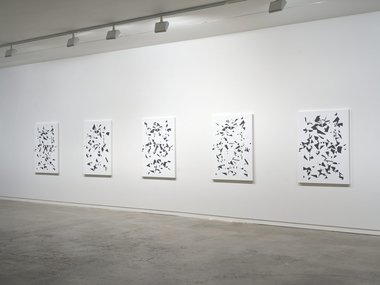





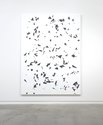
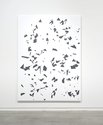
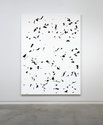
 Two Rooms presents a program of residencies and projects
Two Rooms presents a program of residencies and projects Advertising in this column
Advertising in this column
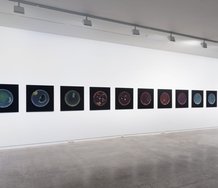
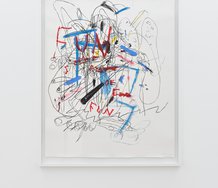

This Discussion has 0 comments.
Comment
Participate
Register to Participate.
Sign in
Sign in to an existing account.